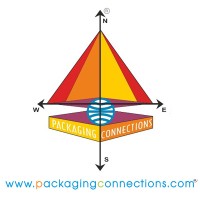
Amcor unveils decarbonization roadmap to...
Amcor, a global leader in responsible packaging solutions, has unveiled its Decarbonization Roadmap aimed at reducing

Amcor, a global leader in responsible packaging solutions, has unveiled its Decarbonization Roadmap aimed at reducing
HYBRID Software has announced the release of iC3D Suite version 9.5, a significant update to its cutting-edge packagi
Smurfit Kappa, a global leader in sustainable packaging, has announced its 2023 financial results, highlighting a str
As the packaging industry shifts towards more sustainable solutions, the demand for easy-to-recycle carrier bags has
Minilam has announced the launch of its groundbreaking Minilam R2R, a state-of-the-art roll-to-roll laminating and di
Pernod Ricard’s Absolut Group has unveiled its latest artistic limited-edition vodka bottles, the Absolut Warhol, con
Nestlé Nigeria has introduced a newly packaged version of its iconic breakfast cereal, Golden Morn, emphasizing the b
As the global focus on sustainability intensifies, the food packaging industry finds itself at a pivotal crossroads. The shift towards recyclable packaging is no longer just a trend—it's becoming a fundamental expectation from both consumers and regulators. For corporations, this change brings both opportunities and challenges, demanding a proactive and strategic approach to ensure they not only comply with new standards but also lead the way in environmental stewardship.
In recent years, there has been a significant push towards reducing the environmental impact of packaging. Traditional materials like plastic, though functional and cost-effective, have come under scrutiny due to their contribution to pollution and landfill waste. As a result, the industry is witnessing a surge in the development and adoption of recyclable materials such as paper, cardboard, and compostable plastics.
These innovations in packaging are designed not only to reduce waste but also to maintain the integrity and freshness of food products. For instance, companies like Sonoco are pioneering the use of paper-bottom cans, which are crafted from recycled paper fibres and are fully recyclable. These solutions meet the dual demands of sustainability and functionality, offering a way forward for the industry.
For corporations in the food packaging sector, responding to this shift involves more than just adopting recyclable materials. It requires a comprehensive strategy that aligns with the broader goals of sustainability and corporate social responsibility (CSR). Here’s how companies can effectively navigate this new landscape:
Commit to Innovation: Companies should invest in research and development to create packaging solutions that are not only recyclable but also enhance the consumer experience. Innovation should focus on improving the usability, durability, and appeal of recyclable packaging, ensuring it meets the same high standards as traditional materials.
Engage in Transparent Communication: Transparency is key in building consumer trust. Corporations should communicate the benefits and limitations of their recyclable packaging, providing education on proper disposal and recycling practices. This helps to ensure that consumers are fully engaged in the sustainability journey.
Collaborate Across the Supply Chain: Achieving sustainability goals requires collaboration across the entire supply chain. Corporations should work closely with suppliers, manufacturers, and retailers to develop and implement recyclable packaging solutions. This includes setting shared sustainability targets and tracking progress collectively.
Adapt to Regulatory Changes: As governments around the world introduce stricter regulations on packaging waste, corporations must stay ahead of the curve by not only complying with these regulations but also influencing policy through active engagement. By participating in industry forums and discussions, companies can help shape the future of packaging regulations.
Foster a Culture of Sustainability: Internally, corporations should foster a culture that prioritizes sustainability at every level. This means integrating sustainability goals into the core business strategy, incentivizing eco-friendly practices, and encouraging employees to contribute ideas for reducing environmental impact.
Measure and Report Impact: Accountability is crucial in sustainability efforts. Corporations should establish clear metrics for measuring the environmental impact of their packaging and regularly report on progress. This not only demonstrates commitment but also helps identify areas for further improvement.
Consumers today are more environmentally conscious than ever before. They expect the brands they support to take meaningful action in reducing their environmental footprint. For food packaging companies, this means that adopting recyclable packaging is not just about meeting regulatory requirements—it’s about building a strong connection with consumers who value sustainability.
By leading the charge in recyclable packaging, corporations can differentiate themselves in a competitive market, foster brand loyalty, and contribute to a healthier planet. It’s a win-win scenario where business success and environmental responsibility go hand in hand.
The shift towards recyclable food packaging represents a significant opportunity for corporations to demonstrate leadership in sustainability. By embracing innovation, collaborating across the supply chain, and engaging consumers in the process, companies can not only meet the demands of the present but also shape the future of the packaging industry. As we move forward, those who prioritize sustainable practices today will be the ones to thrive in a more environmentally conscious world.

One of Pringles’ most distinguishing features is its packaging.
With the right material choices and reliable, accurate data, the carbon footprint of pharmaceutical packaging can be
Four Nordic firms have teamed up to create a groundbreaking reusable and refillable consumer packaging system, paired
Innovia Films is set to unveil its comprehensive range of fully recyclable solutions at Packaging Innovations in Birm
Innovia Films, a leading material science pioneer and a major producer of BOPP films, has announced the launch of Ray
Innovia Films, a leader in material science and a major producer of BOPP films, has unveiled a new white ultra low-de
Tetra Pak and Mengniu Group have announced the launch of a limited edition Milk Deluxe Pure Milk range, showcasing 30